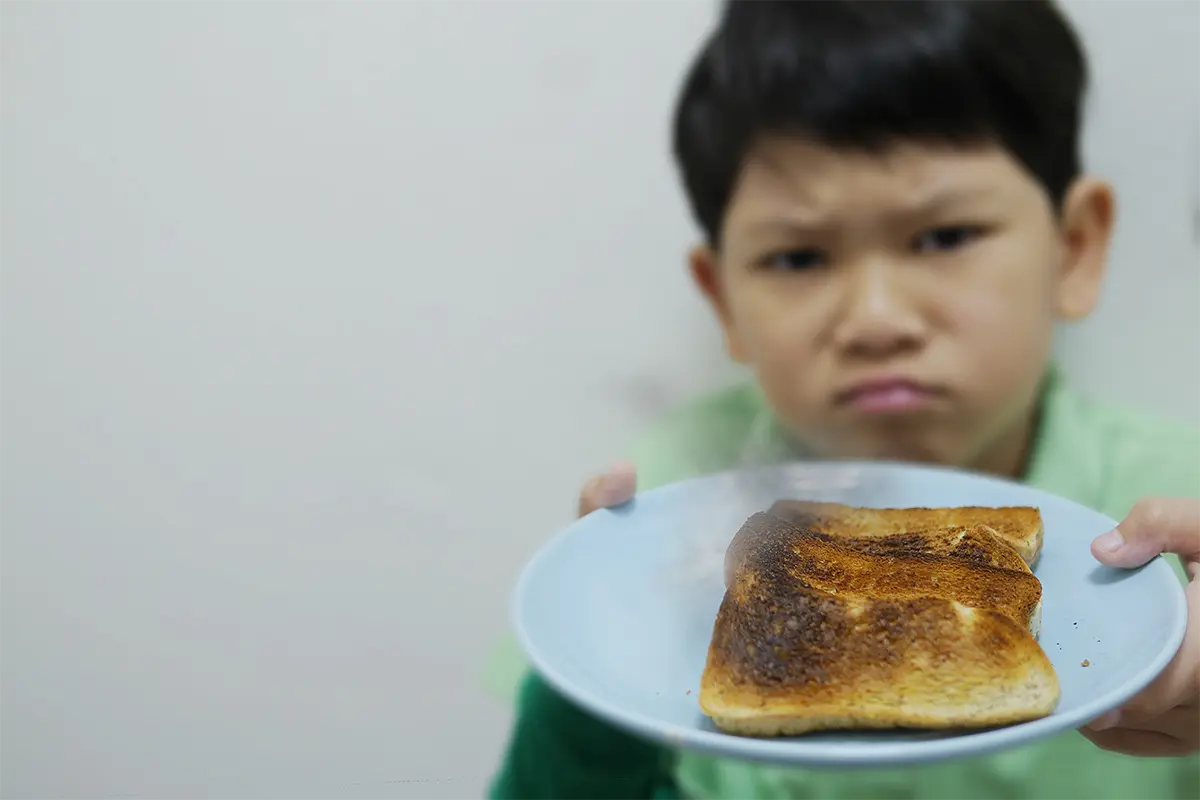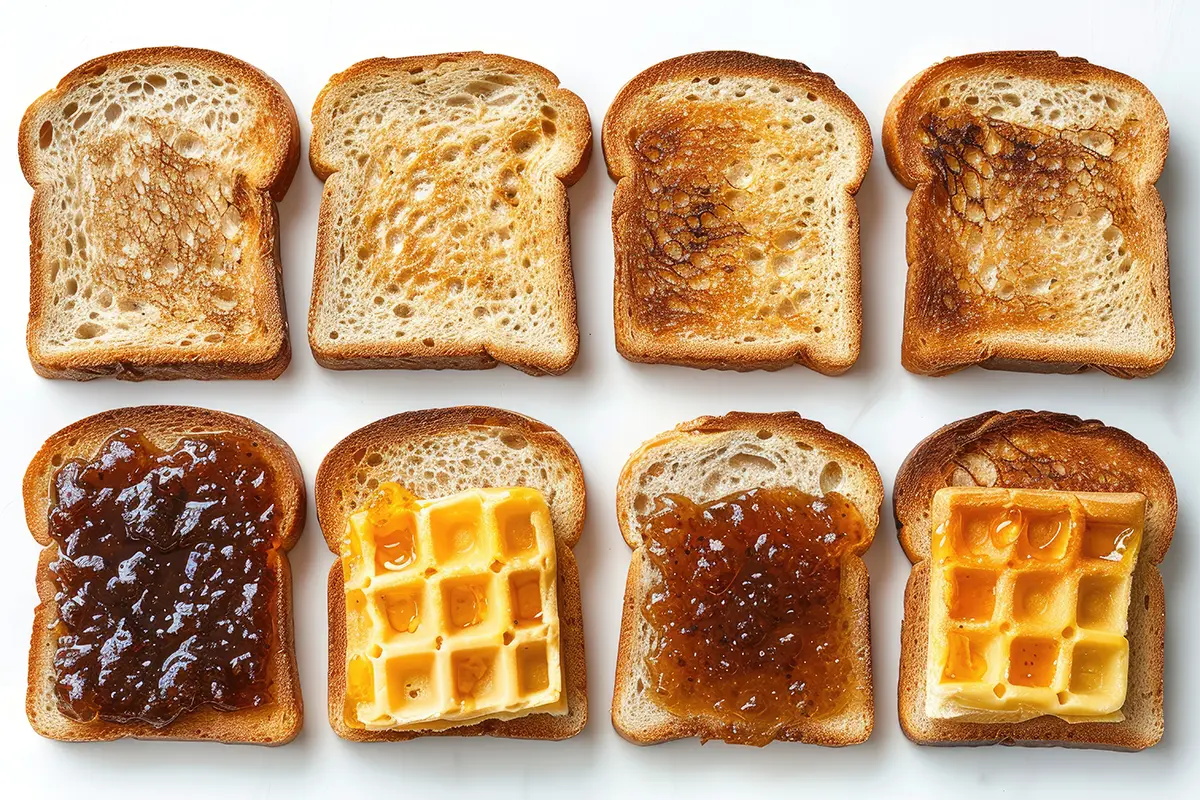When it comes to whipping up a delightful breakfast, French toast often tops the list with its sweet, golden allure. However, concerns sometimes bubble up regarding soggy French toast and its safety. This article dives deep into the nitty-gritty of French toast preparation, especially focusing on soggy versions and their potential health risks. From ingredient selection to cooking techniques, we cover it all, offering insights and expert tips to ensure every bite is not only delicious but safe.
Introduction to French Toast Safety
Overview of French Toast
French toast, a cherished breakfast classic, marvelously transforms humble bread into a scrumptious meal with the simple addition of eggs and milk. This dish, originating from ancient times, has evolved into a modern-day favorite enjoyed in countless variations across the globe. Typically, the bread is soaked in a mixture of beaten eggs and milk, then fried to golden perfection, creating a delightful contrast between its crisp exterior and soft, custardy center.
However, the issue arises when French toast turns out soggy. Sogginess not only affects the texture and enjoyment of eating but also raises concerns about its safety. A soggy French toast could indicate that the egg mixture has not been cooked thoroughly. Considering that raw or undercooked eggs can harbor pathogens like Salmonella, this texture might signal a potential health risk, necessitating a careful cooking process to ensure all parts of the French toast reach a safe internal temperature.
Furthermore, the quality of the ingredients plays a critical role. Using fresh, high-quality eggs and milk can decrease the risk of contamination and improve the overall flavor and texture of the dish. Additionally, the choice of bread can influence the outcome; a denser, day-old bread absorbs the egg mixture better without becoming overly moist, which helps maintain the desired texture after cooking.
Thus, while French toast can be a delightful and simple dish to prepare, attention to detail in the cooking process and ingredient selection is paramount to ensure that it is not only tasty but also safe to consume.
Common Concerns with Soggy French Toast
The main worry with soggy French toast stems from how well the egg in the mixture cooks. Eggs, wonderful as they are, can harbor bacteria like Salmonella if not cooked properly. Hence, a soggy piece might suggest that the egg mixture hasn’t reached a safe internal temperature, setting the stage for possible health risks. Moreover, using ingredients that aren’t fresh can add another layer of concern, making the quality and storage of your eggs, milk, and bread paramount.
In sum, while soggy French toast might just seem unappealing to some, it’s essential to recognize that its implications can extend far beyond texture, touching on aspects critical for your well-being. Stick with us as we unravel how to ace your French toast game, keeping it deliciously crisp and, most importantly, safe.
Ingredients Impact on Safety
Choosing the Right Ingredients
Choosing the right ingredients for French toast goes beyond mere taste; it’s essential for ensuring the dish’s safety and enhancing its overall quality. When selecting eggs, always opt for the freshest available or consider using pasteurized eggs, especially if serving to vulnerable populations like young children, the elderly, or those with compromised immune systems. Fresh eggs are less likely to harbor harmful bacteria and will give your French toast a rich, creamy texture.
For the milk component, whether you use dairy or a non-dairy alternative, ensure it’s fresh and stored correctly. Dairy milk should be pasteurized and refrigerated, while plant-based milks, like almond or oat, should be shaken well and checked for any signs of spoilage before use.
The choice of bread can also make or break your French toast. Stale bread is actually preferable because it absorbs more egg mixture without falling apart. Look for denser bread types, such as challah or brioche, which not only hold up better under the weight of the egg mixture but also contribute a buttery richness to the final dish.
Additionally, consider the flavor enhancements: a pinch of cinnamon, nutmeg, or vanilla extract can transform your French toast from ordinary to extraordinary. These spices not only add depth to the flavor but can also stimulate the appetite and add a warm, comforting aroma.
By carefully selecting each ingredient, you ensure that your French toast is not only safe to eat but also a delightful culinary experience.

Achieving the perfect golden crust on French toast
Eggs, Milk, and Bread Quality
Firstly, eggs are the backbone of your French toast mixture. Always opt for eggs that are fresh and preferably pasteurized. These eggs have undergone a process to eliminate pathogens, significantly lowering the risk of foodborne illnesses. Moreover, storing eggs correctly is vital; keep them refrigerated to maintain their safety and quality.
Now, onto milk. Whether you choose dairy or a plant-based alternative, freshness is key. Check the expiry date, and ensure it’s stored properly. For dairy milk, pasteurization is a plus, as it kills harmful bacteria without affecting nutritional value or taste.
Lastly, the bread. The type of bread you use can influence not just texture but also how well your French toast cooks. Thicker slices often work best—they soak up the egg mixture without falling apart or becoming overly soggy. Stale bread can also be a brilliant choice, as it absorbs more liquid and retains a better structure when cooked.
By carefully selecting each ingredient, you not only enhance the flavor of your French toast but also boost its safety profile, ensuring every bite is a pleasure without peril. Next up, we’ll explore the cooking techniques that keep sogginess at bay and ensure your breakfast is perfectly prepared.
Cooking Techniques to Avoid Sogginess
Mastering the Perfect French Toast Technique
Mastering the perfect French toast technique involves a keen eye for detail and a bit of culinary finesse. Firstly, the choice of bread plays a pivotal role. Opting for a denser, thicker bread, such as brioche or challah, can enhance the dish’s overall texture, allowing it to absorb the egg mixture thoroughly without falling apart. This results in a rich, custardy interior that’s a hallmark of excellent French toast.
Moreover, the egg mixture itself deserves attention. Besides the basics of eggs and milk, adding a dash of vanilla extract, a sprinkle of cinnamon, or even a small amount of orange zest can elevate the flavor profile dramatically. Each ingredient should be whisked together until the mixture is smooth and homogeneous, ensuring that each slice of bread is evenly coated.
Furthermore, the soaking time is crucial. Bread should be dipped in the egg mixture just long enough to saturate it, but not so long that it begins to disintegrate. This balance ensures that the bread maintains its structure while cooking, leading to a perfect golden-brown finish.
Additionally, the cooking surface and fat used for frying can make a significant difference. A non-stick skillet or griddle is ideal, and using butter not only adds flavor but also helps achieve an appealingly crispy exterior. Keeping the heat medium to medium-high allows the bread to cook through evenly, preventing any raw, soggy middles.
By carefully considering each of these aspects, you can master the art of making French toast that is consistently delicious and satisfyingly textured, turning a simple breakfast item into a gourmet treat.
Griddle Temperature and Cooking Time
First off, let’s talk about the griddle temperature. A hot griddle is key—typically around 350 degrees Fahrenheit. This high heat helps quickly seal the exterior, reducing the risk of sogginess. However, if it’s too hot, the outside might burn before the inside cooks thoroughly. So, maintaining the right temperature is crucial.
Next, consider the cooking time. Each side of the French toast should sizzle for about 2 to 3 minutes. This duration ensures that the egg mixture cooks evenly, firming up the interior without leaving it wet or undercooked. Always use a timer to keep track, and adjust the heat as needed to achieve that golden brown perfection.
By controlling the griddle temperature and being precise with cooking time, you can master the art of making French toast that’s crispy on the outside and tender but not soggy on the inside. Up next, we’ll delve into the potential health risks associated with undercooked French toast and how to mitigate them.
Health Risks Associated with Undercooked French Toast
Potential Health Risks
Preparing French toast requires careful attention not just to taste and texture, but crucially to safety as well. The primary concern when making French toast centers on the proper cooking of the egg mixture, as undercooked eggs can harbor dangerous pathogens like Salmonella. These bacteria are notorious for causing foodborne illnesses, which can manifest as stomach cramps, diarrhea, and fever, potentially leading to more severe health complications, especially in vulnerable groups such as young children, the elderly, and those with weakened immune systems.
Moreover, the importance of using fresh, high-quality ingredients cannot be overstated. Eggs, milk, and bread should all be sourced from reputable suppliers and checked for freshness before use. This not only ensures the safety of the French toast but also enhances its flavor. Additionally, maintaining proper hygiene during the preparation process is vital. This includes washing hands thoroughly before and after handling raw ingredients, as well as ensuring that all utensils and surfaces are clean to avoid cross-contamination.
Furthermore, attention should be given to how the French toast is stored if not served immediately. Incorrect storage can lead to the growth of bacteria or the production of toxins by bacteria, which can persist even after subsequent reheating of the food.
By taking these precautions, one can minimize the potential health risks associated with making French toast, ensuring a safe and enjoyable eating experience for everyone. This diligence ensures that the delightful treat remains a favorite, safe choice for a nourishing breakfast or brunch.
Salmonella and Other Foodborne Illnesses

Fresh, high-quality ingredients ready for French toast preparation
The main risk from undercooked French toast comes from Salmonella, found in raw eggs. This bacterium causes symptoms like stomach cramps, fever, and diarrhea. To avoid this, ensure the French toast cooks thoroughly, reaching an internal temperature that kills harmful bacteria.
Other pathogens, such as E. coli and Listeria, can also pose risks. These can come from contaminated ingredients or improper food handling. Therefore, always start with clean hands and utensils and use fresh, well-stored ingredients.
By understanding these risks and how to manage them, you can enjoy French toast that is not only delicious but also safe. Next, we’ll answer common FAQs about soggy French toast, including safety concerns and signs of proper cooking.
FAQs on Soggy French Toast
Common Queries Addressed
Navigating the dos and don’ts of French toast can stir up questions. Let’s clear up some common queries!
Is It Safe to Eat Soggy French Toast?
So, is it a yes or a no? Well, not exactly. Sogginess in French toast doesn’t automatically spell danger, but it often indicates undercooking. This can leave room for bacteria like Salmonella to thrive, especially if the eggs in the mixture aren’t fully cooked. Always ensure the toast is cooked to a safe internal temperature.
How to Tell if French Toast is Cooked Properly?
To gauge if your French toast is cooked well, look for a golden-brown crust that’s slightly crisp. The center should be firm, not liquidy. A kitchen thermometer can be handy here—aim for an internal temperature of 160°F to ensure safety.
By understanding these aspects, you can whip up French toast that’s not only safe but also satisfying. Stay tuned as we delve into choosing the best bread for French toast in the upcoming section.

